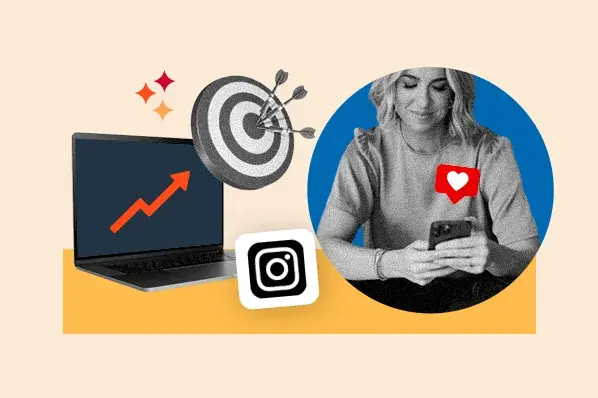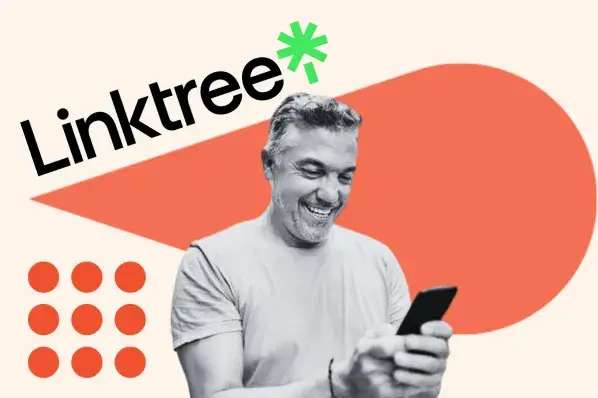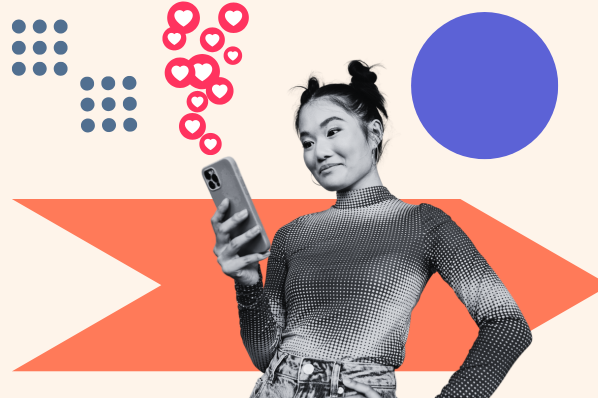With more than 1 billion monthly active users, Instagram is one of the most essential social media platforms for marketers and business owners to connect with their audience.
If you're new to the platform, you're probably wondering how to get Instagram followers who are genuinely interested in what your business has to offer.
Growing your following takes time and attention, but there are a few things you can do right now to build your Instagram platform.
Let's dive into the steps you can take to tap into your audience on Instagram and increase your follower count.
Table of Contents
How to Get More Followers on Instagram
- Don't buy Instagram followers.
- Create and optimize your Instagram account.
- Designate a content creator.
- Post high-quality content.
- Leverage Reels, Stories, and live videos.
- Optimize your Instagram Stories Highlights
- Post meaningful content.
- Keep a consistent content calendar.
- Curate user-generated content.
- Optimize your captions for Instagram SEO.
- Use relevant hashtags.
- Interact with your followers.
- Cross-promote your Instagram content and account.
- Run Instagram contests and giveaways.
- Collaborate with influencers.
- Make your Instagram profile easy to follow.
1. Don't buy Instagram followers.
While many social influencers and major brands work hard to build an organic following, some choose to buy followers to increase their social reach and engagement.
Buying followers is cheap; some companies charge less than $5 for hundreds of followers.
However, buying followers and likes can severely damage your brand image and decrease engagement.
For example, Hootsuite created a fake Instagram account and bought 1,000 followers for as little as $15 to test how purchased followers influence audience engagement.
The company received some new followers over the course of a month, but the followers were fake, barely interacted with the content, and were unrelated to the brand.
Furthermore, you risk Instagram removing your account for violating their community guidelines if you buy fake followers.
Moreover, fake followers won’t buy your product or support your brand. Instead, focus on gaining authentic followers to increase your engagement and sales.
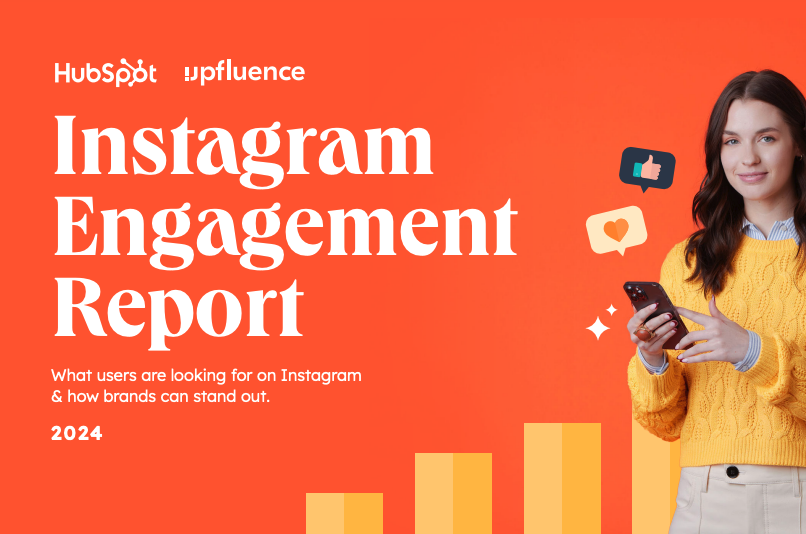
The 2024 Instagram Engagement Data Report
New data to help you shape your Instagram strategy
- Optimized content types
- Influencer marketing
- Posting volume
- And more!
Download Free
All fields are required.

2. Create and optimize your Instagram account.
Your Instagram profile should tell your potential followers about your brand, what you do, and why they should follow you. Most importantly, your Instagram should be set up as a business account and not a regular personal account.
To set up a business account on Instagram, follow these steps. Once your business account is set up, you can optimize it to attract followers.
Username
As for your account's name, start with a recognizable and easily searchable username — like your business name. If your business' name is already taken, try keeping your business name as the first part of your username so people searching for your business are more likely to come across your account.
For example, the Australian activewear line Lorna Jane uses the username @lornajaneactive.
Pro tip: Make sure to add your full business name to the “Name” field by clicking “Edit Profile.” This will appear under your profile picture and your username in search.
Public Profile
Make sure your profile is public. To make your profile public, open Instagram, click on the gear icon to open “Options,” and make sure “Private Account” is turned off.
Profile Photo
Choose a profile picture on-brand with your other social networks, like your company logo. Check out HubSpot's profile picture for reference.
Profile Bio
Fill your bio with delightful, actionable, and informative information about your brand. This lets people know what you're about and gives them a reason to follow you. Include who you are and what you do, and add a hint of personality. Here are a few examples for inspiration:
- @WeWork: “For all the #waysyouwork, we're here #wework
- @Oreo: “Playful moments from your favorite cookie."
- @natgeo: "Experience the world through the eyes of National Geographic photographers.”
Notice the bios are short, to the point, and may include relevant hashtags.
Profile Link
Add a link to your bio to make it easy for people to go straight from Instagram to your website if they want to.
Notifications
Enable notifications to see when people share or comment on your photos so you can engage with them quickly. To enable notifications, go to “Settings” > “Notifications” > "Posts, Stories, and Comments." Select “From Everyone” for every category.
Pro tip: We don't recommend you link your Instagram account to Twitter and Facebook, so your Instagram posts are automatically published on those other accounts. The post types are different.
3. Designate a content creator.
There should be one or two people managing your business's Instagram account. If possible, assign a content creator for your account who has the experience and understands the platform, including all its unique features.
Pro tip: If you work for a large organization, keep an organized guidelines document so your content stays consistent with your brand and that others who want to contribute know what/what not to post.
4. Post high-quality content.
Get familiar with essential photography and videography tips and editing apps. Since Instagram is a mobile app, you'll likely take most of the photos and videos you post on Instagram on your mobile device. Here are some tips for taking great photos and videos:
- Focus on one subject at a time.
- Embrace negative space.
- Look for symmetry.
- Capture small details.
- Capture a variety of angles.
- Make sure the video or image is clear and steady.
- Have excellent lighting and avoid grainy imagery.
Pro tip: Instagram also offers a wide range of filters, effects, and tools to make your content stand out, so experiment with different features to see which you like best.
5. Leverage Reels, Stories, and Live videos.
In 2021, the head of Instagram, Adam Mosseri, announced the platform is no longer a photo-sharing app. Since then, Instagram has prioritized video content such as Reels and Stories.
It makes sense, considering videos are more engaging than photos. Our Instagram Engagement Report found that video posts got three times more engagement than photos.
So when you're creating content for your brand's Instagram, focus primarily on engaging, dynamic, and interesting Reels and live videos.
For example, the owner of Perfect Pooches Dog Grooming runs an Instagram page called Girl With The Dogs. The page mainly consists of videos showing the behind-the-scenes of pet grooming as well as tips for different breeds of animals.
These Reels are excellent because they showcase the groomer's work and care for her customers' pets.
Pro tip: You can also repurpose content from TikTok or YouTube Shorts as Instagram Reels, but avoid any logos from other apps as that can cause the algorithm to show you video to fewer people.
6. Optimize your Instagram Stories Highlights.
Instagram Stories disappear after 24 hours, but you can keep them up indefinitely by sorting them into Instagram Highlights. Highlights are especially useful if you have special, ongoing deals or offers.
Take a look at Sephora's Instagram and how the company uses highlights to display current offers.
Sephora's use of Highlights is a great example because the company's highlights organize and display different categories of products, such as fragrances and hair care. Furthermore, they have a highlight showing the brand's values.
Pro tip: When posting Stories, think of ways you can later archive them into Highlights.
7. Post meaningful content.
Post content that is relatable, authentic, and on-brand. This means posting content that highlights your products and services but doesn't always feel like a direct advertisement.
Look at Dove's official Instagram as an example. The company post Reels like "Choose a Dove Body Wash with Me" where viewers watch a person go through different body washes to start their morning.
However, the company also posts more heartfelt content, such as a Reel showing different mothers and daughters washing each other's hair and playing together.
Both videos feature Dove products but in a more humanized and authentic way.
Pro tip: Keep tabs on trending topics, holidays, and social media trends to help you create meaningful and relevant content.
8. Keep a consistent content calendar.
To start posting on Instagram, download this social media content calendar template and plan your Instagram posts.
Over time, you'll want to build up a backlog of photos for times of need, like the weekends or when you go on vacation.
Keep your target persona in mind when planning your posting schedule, as that can drastically change your posting timing and frequency — especially if you're targeting an audience in a different time zone.
Optimizing your schedule for your specific audience might take time and experimentation.
According to our State of Social Media Report, the best times to post on Instagram are:
- 12 p.m. - 2:59 p.m.
- 3 p.m. - 5:59 p.m.
- 6 p.m. - 8:59 p.m.
Pro tip: For a United States audience, combine Eastern and Central time zones, as they represent almost 80% of the U.S. population.
For audiences outside the U.S., use whichever time zones your target audience uses.

The 2024 Instagram Engagement Data Report
New data to help you shape your Instagram strategy
- Optimized content types
- Influencer marketing
- Posting volume
- And more!
Download Free
All fields are required.

9. Curate user-generated Instagram content.
Encourage your customers to post content using your products or services and tag your Instagram account.
This will alert you to a new tagged post, and you can repost the content on your own Instagram account or to your Instagram Story.
For example, camera company GoPro often posts content taken by athletes, stunt experts, and active influencers using GoPro cameras.
The Instagram photo below was taken by professional surfer Kai Jenny.
Pro tip: Create a brand hashtag customers can use when posting content of your products or services.
10. Optimize your captions for SEO.
Captions are integral to your Instagram because they can showcase your brand voice, double as a call to action, and contextualize your content.
They can also make your posts easier to find when optimized for SEO.
Instagram now allows users to search for content using keywords rather than just usernames or hashtags.
So, be sure to use keywords that align with your brand so your content is easier to find.
For instance, an influencer posted a Reel showing themselves using a concealer by Fyne Cosmetics. The caption included the word "concealer."
As a result, it was one of the first videos I found when I searched "concealer" in Instagram's search bar.
Pro tip: To help you find the right keywords, look at other brands within your industry to see what keywords they include in their posts.
11. Use relevant hashtags.
On Instagram, a hashtag ties the conversations of different users who wouldn't already be connected into a single stream.
If you use relevant hashtags, your posts will get exposure to a broader audience than those who already follow you or know about your brand.
Research relevant hashtags in your niche or industry to find the hashtags your audience might be using. The easiest way to do this research is in the Instagram app, the "explore" tab.
Searching for one hashtag shows you a list of related hashtags at the top of your screen.
For example, I searched #shoes and was given other suggestions, such as #shoeslover #shoesaddict.
Pro tip: Look out for trending hashtags and find ways to incorporate them into your content or create content relating to the hashtag.
12. Interact with your followers.
The most natural way to draw attention to your Instagram account is by interacting with your followers. Like their comments and repost them whenever appropriate.
You should also consider following other accounts that fall within your niche. For example, Nike follows athletes like Grace Geyoro, Chris Mosier, and ShaCarri Richardson.
When another account is notified that you've followed them, they might check out your budget and decide whether to follow you.
You'll also see their recent posts in your feed, so you can like their content and interact with them if you choose to.
Pro tip: As you build a following, celebrate your followers and show you appreciate them by responding to their comments, following them, and engaging with their posts.
13. Cross-promote your Instagram content.
Once you build a solid relationship with some of the folks behind these accounts with a similar audience, you might ask to co-promote each others' accounts.
The more natural and less spammy you can make the content of these cross-promotions — especially the captions — the better.
It also helps to be picky about them and only cross-promote sparingly.
Below is an example of what that looks like from food blogger @sprinklesforbreakfast and the companies Sweets Indeed and Cookie Cutter Kingdom.
The food blogger posted a video using the companies' products, promoted their official Instagram in the caption, and tagged them.
14. Run Instagram contests and giveaways.
Another great way to expand your reach while increasing engagement on your Instagram content is to publish a post promoting a contest or giveaway.
In that post, ask people to follow your account and like or comment on the image for a chance to win.
For example, Skinician, a skincare company, hosted a giveaway on its Instagram. To enter, people had to follow the account and tag a friend.
Pro tip: Consider collaborating with another account to run the giveaway. Doing so will introduce your brand to their audience as well.
15. Collaborate with Influencers.
Instagram is the most popular platform for influencer marketing. As mentioned earlier, influencers allow brands to tap into new audiences.
Once you have a strong enough presence on Instagram and you've built enough connections, look for influencers whose platform aligns with yours.
For example, if you're a makeup company, look for makeup or beauty influencers who can promote your products.
If the idea of collaborating with an influencer sounds expensive, consider working with micro-influencers who have a following between 10,000 and 100,000 followers rather than large influencers with millions.
Pro tip: If you're wondering how to find the best influencers for your brand, click here.
16. Make your Instagram profile easy to follow.
Place a follow button on your website homepage, "About Us" page, blog posts, and other places on your website. If your brand has brick-and-mortar locations, put out an excellent ol' print call-to-action letting people know you have an Instagram account and encouraging them to follow you.
Also, promote your Instagram account on your other social media accounts. The folks who already follow you on Facebook and Twitter will follow you on Instagram without much prodding.
Let those followers know you're on Instagram and encourage them to follow you by including a link to your Instagram account in the bios and posts of those other social media accounts.
The Best Instagram Apps to Get Followers
- CrowdFire
- Hootsuite
- Iconosquare
- InstaTag
- Repost
You’re probably feeling a little overwhelmed. Don’t worry; that’s normal. Creating and managing a new Instagram strategy is a lot of work.
Thankfully, there are some great apps to help your Instagram posts stand out and plenty of apps to help you get followers. We're going to talk about the latter in this section.
Crowdfire
Crowdfire is a helpful tool for pruning and growing your Instagram following. Pruning your list is as important as developing it, as it helps keep your engagement rates high.
Use Crowdfire to identify inactive followers, send automated direct messages, and discover new followers.
Price: Free
Hootsuite
Hootsuite can help analyze your competition, find the best times to post, and identify opportunities to increase engagement. Use this tool to manage your Instagram campaigns and measure your success.
Don't miss its handy mobile app for Instagramming on the go.
Price: Paid, but you can try it free for 30 days
Iconosquare
Iconosquare is an all-in-one Instagram analytics, management, and scheduling tool. Use it to track comments on your Instagram profile (and others if you have multiple accounts) and organize a new and curated content library.
Iconosquare also offers an Instagram search engine you can use to discover influencers and cross-promotional opportunities.
Price: Paid, but you can try it free for 14 days
InstaTag
InstaTag shows you which hashtags are trending for the day.
Use this tool to power content with the hashtags most relevant to your brand and products to get your Instagram profile in front of new followers.
Price: Free
Repost
Repost is a "retweet" feature for Instagram; it allows you to easily repost other people's content (hello, UGC!) while giving credit to the original account.
Repost is an excellent tool for resharing content from customers, followers, employees, and influencers.
Price: Free
Time to Watch Your Follower Count Go Up
Attracting genuine social media followers isn’t easy, but by following these tips and using a few additional apps, you’ll see an improvement quickly.
Give it a shot: Make a profile and start posting, testing, tweaking, and promoting your account.
Garnering a following on Instagram won't happen overnight, but the stronger a foundation you create on your account in your niche Instagram community, the higher quality your followers will be.
Editor's note: This post was originally published in June 2023 and has been updated for comprehensiveness.

The 2024 Instagram Engagement Data Report
New data to help you shape your Instagram strategy
- Optimized content types
- Influencer marketing
- Posting volume
- And more!
Download Free
All fields are required.

Instagram Marketing

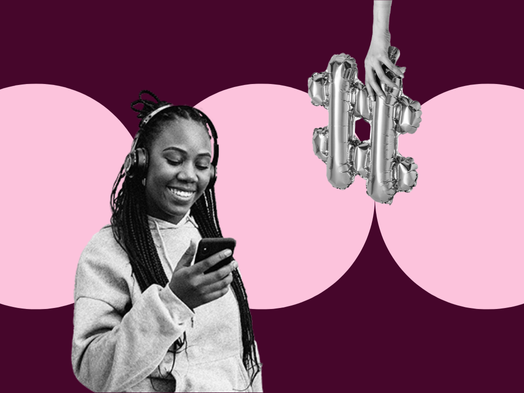
![New Data: Instagram Engagement Report [Free Download]](https://no-cache.hubspot.com/cta/default/53/9294dd33-9827-4b39-8fc2-b7fbece7fdb9.png)

![41 Instagram features, hacks, & tips everyone should know about [new data]](https://53.fs1.hubspotusercontent-na1.net/hubfs/53/Instagram-hacks-1-20240916-2633447.webp)
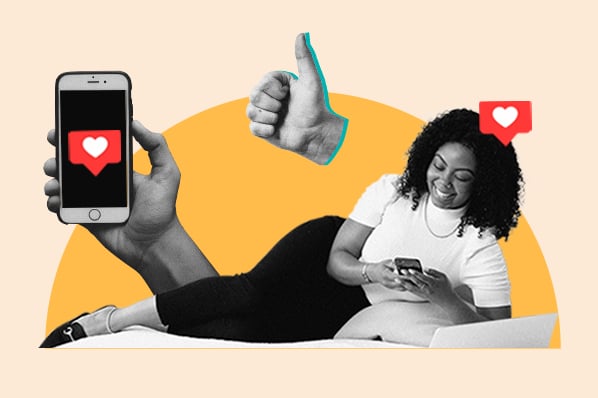
![How to Use Instagram: A Beginner's Guide [Expert Insights + New Data]](https://53.fs1.hubspotusercontent-na1.net/hubfs/53/how-to-use-instagram_0.webp)
![The Pros and Cons of Instagram Marketing, According to an Expert [+ Research]](https://53.fs1.hubspotusercontent-na1.net/hubfs/53/Untitled%20design%20-%202024-11-15T195221.458.jpg)
![How to Use Instagram for Business [Data & Insights From 650+ Marketers]](https://53.fs1.hubspotusercontent-na1.net/hubfs/53/instagram-for-business.webp)
![601 Most Popular Instagram Hashtags in 2024 [+ Trends & Data]](https://53.fs1.hubspotusercontent-na1.net/hubfs/53/instagram-hashtags_2.webp)
